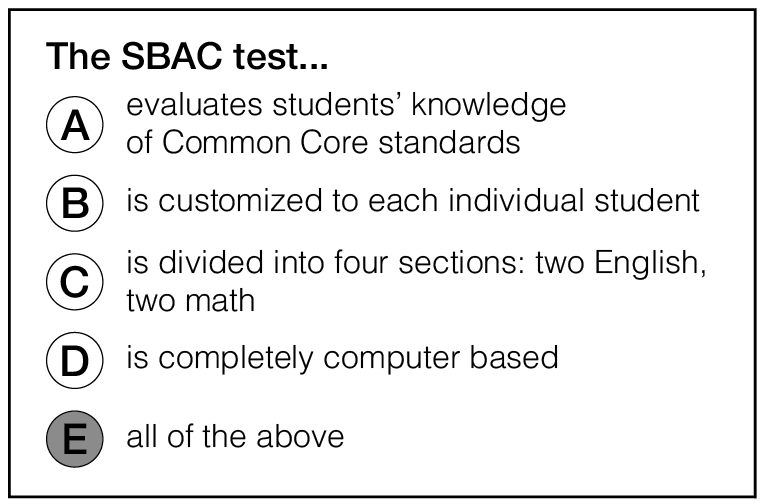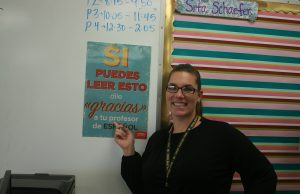Administration introduces new standardized test
This year’s juniors became the first class to take the SBAC, or SMARTER Balanced Assessment Consortium. The SBAC, which was held from May 16th-23rd, is a computerized assessment designed to test juniors in order to evaluate how well students are on track with the Common Core academic standards.
Like the STAR tests that the SBAC replaced as of July 2013, the SBAC tests students’ math and English skills. However, unlike the STAR tests, the SBAC is taken solely on the computer and is more customized to the test taker than other forms of standardized testing.
Bennett Wutkee, assistant principal, explained this customization. “There is a uniform number of questions so each kid should take the same number of questions, but in theory the test is supposed to adapt to how you respond, and based on how you answer each question, it will give you another question,” Wutkee said.
According to the SBAC website, this type of customization is supposed to be beneficial to students in that it “allows students to better demonstrate what they know.”
The SBAC features four assessments, two for English and two for math. The first tests feature multiple choice questions while the last two introduce a new kind of testing situation.
“The first test (for English and math) is a computer adaptive test. The second part of it is a performance task where you see a classroom activity and then you answer a few questions, five questions for math and four for English,” Wutkee said. “But for the English questions, students respond to a performance task with four essays.”
As the SBAC is a completely new form of testing, it resulted in different opinions regarding the level of difficulty for each student. After taking the English section, Lindsey Dickerson, junior, found it to be more difficult than she had expected.
“The written response questions were very straight forward, which was easy, but they required details from the texts and in-depth analysis, which increased their difficulty,” Dickerson said.
Kelson Steele, junior, had a different opinion about the SBAC. According to Steele, the test was “quite easy, basic, and kind of dull.”
With regard to the math section, Alex Chow, junior, found it to be more time consuming than the STAR test.
“The math was more difficult than other standardized tests, but still not very difficult at all. However, the controls on the computer made it difficult to write down each answer, which just made the test take longer,” Chow said.
Since students’ results are being used to check the progress of students and teachers, the assessments are intended to reflect what students have learned thus far.
Dickerson believes the English portion of the SBAC tested the concepts she was taught in school. “In my current and previous English classes, we have really focused on text analysis and context. I believe that this was reflected in the SBAC. The SBAC also required you to write essays or responses to the material, which is common in my current English class,” Dickerson said.
The assessment helps gather data at the school level, where administrators and teachers can use the information to determine where improvements need to be made.
“The data can be used in a lot of different ways,” Wutkee said. “but typically us schools use the data to show how proficient students are in various curricular areas, and then we also can use it in the classroom. Teachers can see if they have been teaching a certain aspect well because their students in general didn’t do as well in that area,” Wutkee said.
The committee of teachers that designed the SBAC is still figuring out how to use the SBAC scores, but as far as administration knows, the scores will be a component in determining the school’s overall ranking.
Though the state will continue to administer SBAC testing, it appears the majority of NP students do not view it as a success or valuable use of class time. “I don’t think that most of what I’ve learned showed up,” Steele said. “It was kind of pointless.”


